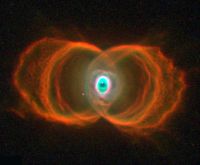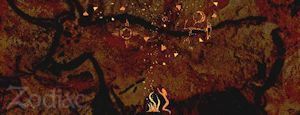 The southern constellation of Musca represents a lowly fly. When Johann Bayer added it to his maps he called it “The Bee” and folks liked that name for a couple of hundred years. But then some map maker called it The Fly except there was already a fly up north which was part of Aries the Ram. I’ll just let astrologers chew on that fact for a bit. During those days folks called Musca the southern fly to distinguish it from the northern fly but eventually the northern one went away completely and Aries became a no-fly zone.
The southern constellation of Musca represents a lowly fly. When Johann Bayer added it to his maps he called it “The Bee” and folks liked that name for a couple of hundred years. But then some map maker called it The Fly except there was already a fly up north which was part of Aries the Ram. I’ll just let astrologers chew on that fact for a bit. During those days folks called Musca the southern fly to distinguish it from the northern fly but eventually the northern one went away completely and Aries became a no-fly zone.
I have my own southern fly story. When I was small we visited my great aunt Bertha’s turkey farm in the Ozarks of Missouri. She had a bazillion turkeys and there were a bazillion flies for every turkey. When we went to leave, our car was covered in flies. As the car got up to speed, they mostly blew off right away. Then one by one the remaining flies we could see on the hood began to lose their grip and the numbers dwindled. It got down to just one fly that wouldn’t let go. Dad sped up, hit the brakes, swerved, and so on, but the determined little bugger just hung on. We figured it was a country fly that always wanted to see the big city so we started calling it Mary Tyler Fly, like that Mary Tyler Moore TV show, and we sang the theme song. It didn’t make it after all.
Nova Muscae 1991 is a binary pair consisting of a small star orbiting a black hole. Occasionally the star ejects material, some of which winds up falling into the black hole, giving off x-rays in the bargain. Anytime matter accelerates to high speed you can bet on getting some serious x-ray action. An x-ray technician once told me that getting an x-ray exam isn’t dangerous but then he hid behind a heavy lead wall while he flipped the switch, so I would keep my distance from Nova Muscae 1991.
 The Hourglass Nebula is a somewhat famous planetary nebula in Musca. The central region is showing greenish cyanish stuff which means lots of oxygen. The thing about stars of this type is that they have spent a lot of their golden years fabricating Carbon, Nitrogen, and Oxygen. It’s called the CNO process for just that reason. Those three elements all give off their own set of colors when they glow but the brightest and most dominate bit of this particular color palette is the green part of the oxygen glow.
The Hourglass Nebula is a somewhat famous planetary nebula in Musca. The central region is showing greenish cyanish stuff which means lots of oxygen. The thing about stars of this type is that they have spent a lot of their golden years fabricating Carbon, Nitrogen, and Oxygen. It’s called the CNO process for just that reason. Those three elements all give off their own set of colors when they glow but the brightest and most dominate bit of this particular color palette is the green part of the oxygen glow.
Musca is also home to the Dark Doodad Nebula. I don’t think the Dark Doodad Nebula needs much in the way of explanation. I mean, it’s a doodad, and it’s dark. And it’s a nebula. Enough said.
Carpe Noctem
















February 12, 2017
Astronomy